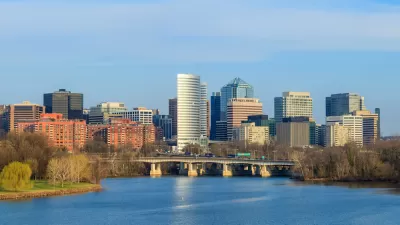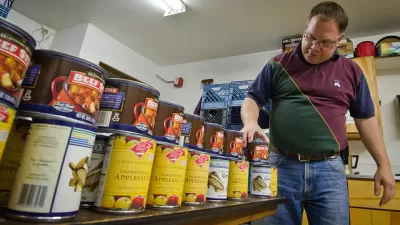Lisa McGirr looks at the growing challenge of suburban poverty, which in the last decade has climbed by 25 percent (almost five times faster than cities), and the larger trends that it signifies.
According to McGirr the effects of this demographic shift are that, "soaring poverty rates threaten the very foundations of suburban identities, suburban politics and the suburb's place in the nation's self-image...The climbing rates of suburban poverty mark a definitive end to the Fordist model of mass production and consumption, and its most internationally recognized poster child: homogeneous middle class families cradled safely in ever expanding suburban developments."
However, as McGirr explains, this traditional image of the suburbs was always somewhat of a fantasy, and its growth was founded on an unsteady terrain of state welfare and private speculation.
According to McGirr, the suburbs are unprepared to dealing with the challenges their residents increasingly face, including gaining access to public services they need, the geographic challenges of decentralized living, and the exodus of the well-to-do for new exurbs and gentrifying urban centers.
And together, these changes and challenges may have a profound effect on the traditional political allegiances and policy demands associated with suburban residents.
"The new poverty may well loosen the suburbs' historic ties to the Republican Party with its emphasis on individualist solutions. Looking toward the future, the new suburban poverty should sound an alarm bell that the suburban "way of life" itself may be better suited to an era now past. It suggests that we should rethink public policies that have long favored homeowners and decentralized living," argues McGirr.
FULL STORY: The New Suburban Poverty

Alabama: Trump Terminates Settlements for Black Communities Harmed By Raw Sewage
Trump deemed the landmark civil rights agreement “illegal DEI and environmental justice policy.”

Planetizen Federal Action Tracker
A weekly monitor of how Trump’s orders and actions are impacting planners and planning in America.

The 120 Year Old Tiny Home Villages That Sheltered San Francisco’s Earthquake Refugees
More than a century ago, San Francisco mobilized to house thousands of residents displaced by the 1906 earthquake. Could their strategy offer a model for the present?

Ken Jennings Launches Transit Web Series
The Jeopardy champ wants you to ride public transit.

BLM To Rescind Public Lands Rule
The change will downgrade conservation, once again putting federal land at risk for mining and other extractive uses.

Indy Neighborhood Group Builds Temporary Multi-Use Path
Community members, aided in part by funding from the city, repurposed a vehicle lane to create a protected bike and pedestrian path for the summer season.
Urban Design for Planners 1: Software Tools
This six-course series explores essential urban design concepts using open source software and equips planners with the tools they need to participate fully in the urban design process.
Planning for Universal Design
Learn the tools for implementing Universal Design in planning regulations.
Clanton & Associates, Inc.
Jessamine County Fiscal Court
Institute for Housing and Urban Development Studies (IHS)
City of Grandview
Harvard GSD Executive Education
Toledo-Lucas County Plan Commissions
Salt Lake City
NYU Wagner Graduate School of Public Service





























